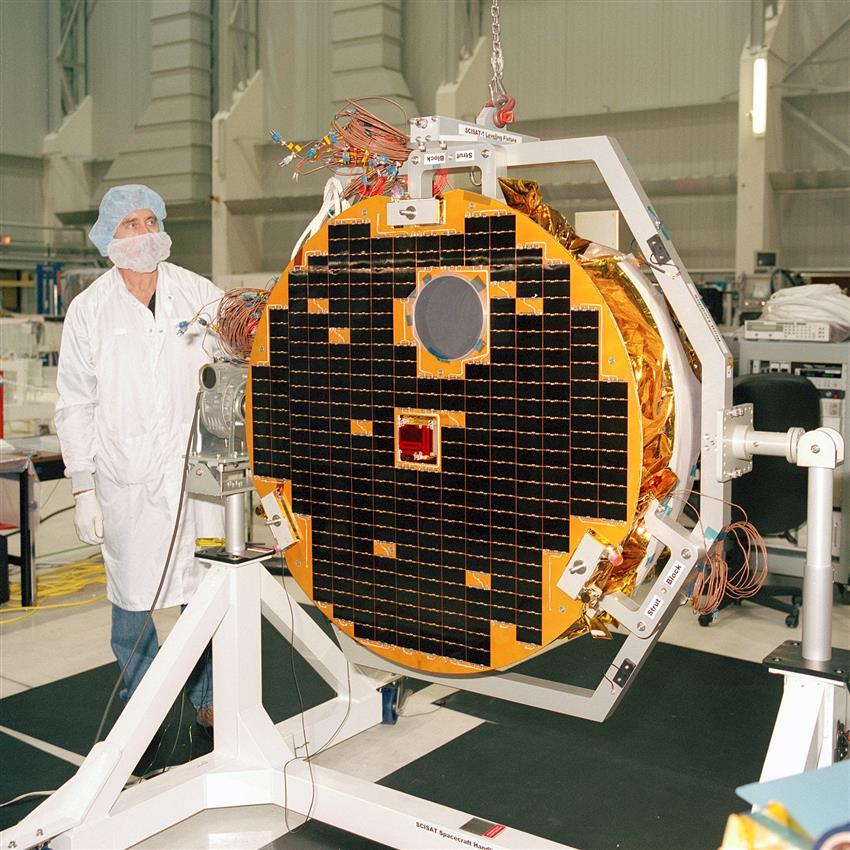SCISAT and ozone depletion

Canada's SCISAT satellite has detected pollutants in the atmosphere that have never been identified before from space while conducting the Atmospheric Chemistry Experiment (ACE). One of these is HCFC-142b, a refrigerant gas that is being used to replace ozone-depleting chlorofluorocarbons. Although the radiation force of HCFCs is 10 times weaker than that of CFCs, they still contribute to the greenhouse effect. SCISAT is the only space-based instrument that can measure these pollutants to assess their effects on the environment.
The satellite has also analyzed the pollutants in the atmosphere caused by the burning of biomass, such as forest fires, and many other constituents, such as methanol. This toxic pollutant is present in very low concentrations throughout the atmosphere. "The data can help us refine global air pollution models," says Dr. Peter Bernath, principal investigator for the mission.

The Canadian SCISAT spacecraft during testing at the Canadian Space Agency's David Florida Laboratory in Ottawa, Ontario, in November 2002. SCISAT's mission is to measure and study the chemical processes that control the distribution of ozone in the Earth's atmosphere. (Credit: Communications Research Center Canada.)
The ACE confirmed the models used to study and make projections of ozone depletion. "We knew ozone was being depleted, and we had an idea how, but the data to prove our theories was limited," says Professor Jack McConnell of York University, a project participant. "ACE observations have given us a better understanding of why and how ozone depletion is occurring. Now it's easier to make predictions."
Finally, the SCISAT mission confirmed that clouds forming in the mesosphere during the summer over the Polar Regions are composed of tiny ice particles. Some scientists associate these polar clouds with climate change.
Shedding new light on ozone

The size of the ozone hole over the Antarctic fluctuates year after year, but a general trend demonstrates that it's getting bigger. These monthly maps of December 1979, 1987, 1996, 1998, and 2005, illustrate these fluctuations. (Credit: NASA)
SCISAT is extremely powerful. Its measurements are highly accurate because it uses light from the Sun to scan the atmosphere. "With only one of its instruments, SCISAT can see more atmospheric constituents than any other satellite in orbit," says Bernath. The results are remarkable: SCISAT can measure molecules in quantities as small as parts-per-trillion. "ACE is setting new standards in atmospheric research," says McConnell.
Each molecule in the atmosphere, including water vapour, ozone, and pollutants, removes or absorbs the Sun's rays in a unique way. Each has a precise wavelength, a particular colour. The SCISAT instruments measure the way that each colour of the light spectrum is absorbed. From this information scientists can determine how much of a particle or gas is present in the atmosphere.